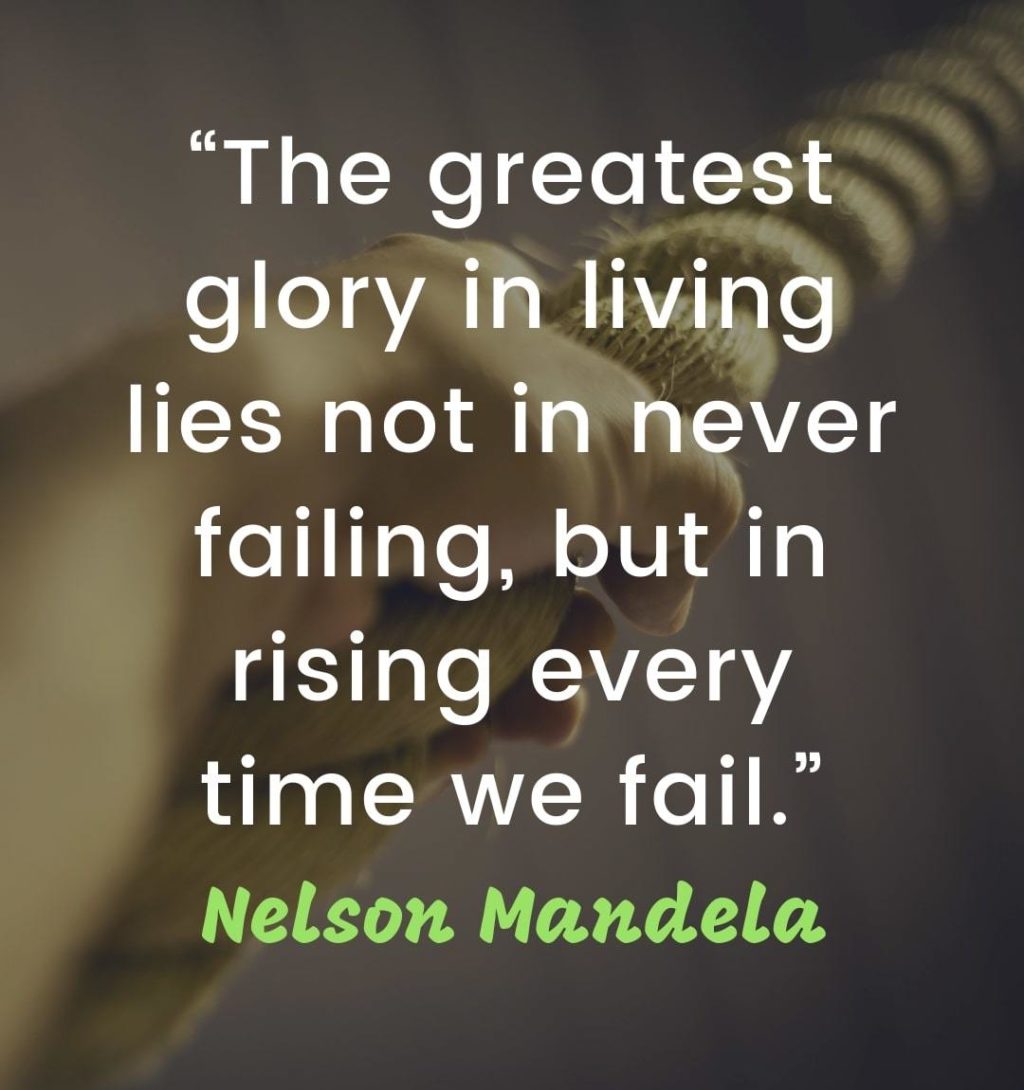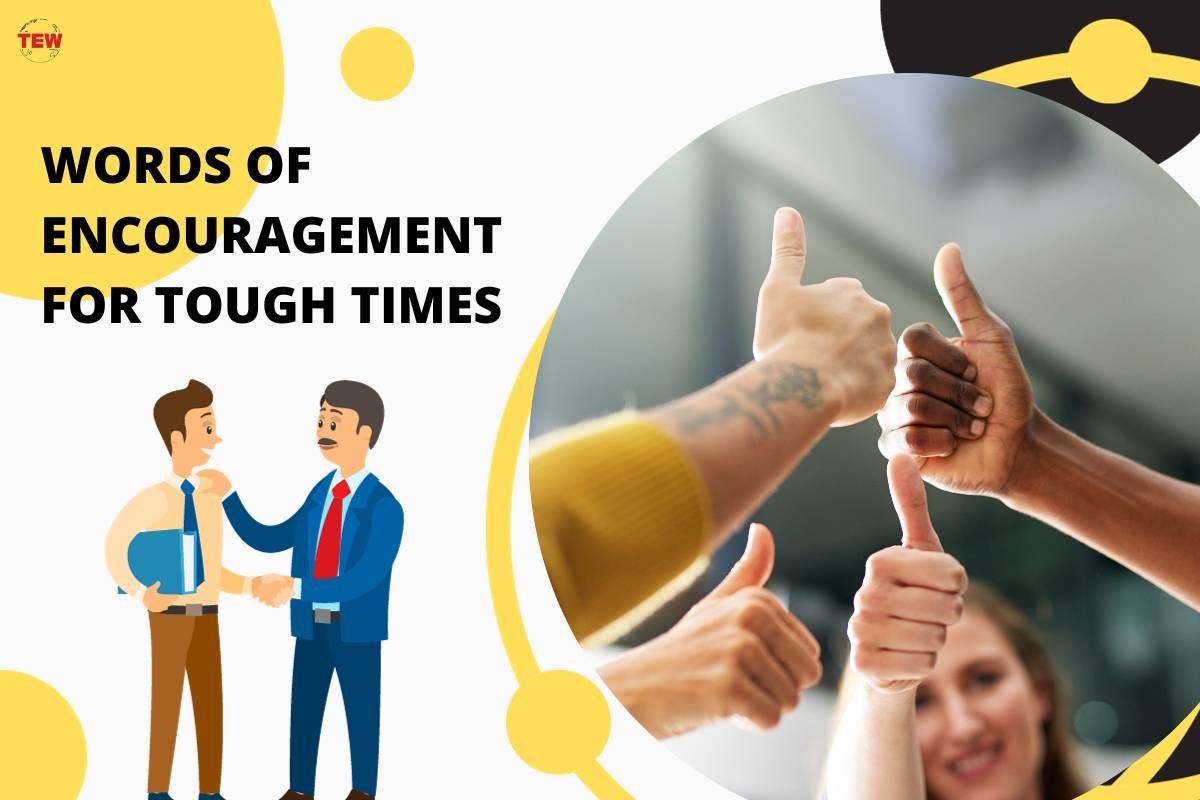Emilia epstein, right, with her younger sister helena epstein, left, in miami beach the younger epstein posted a tiktok video of tameka rooks's motivational voice mail, which went viral.A word of encouragement for 2024 by j.p.
Listen actively and pay attention to what the person is saying.God gave you this life because he knew you were strong enough to live it..Free daily devotionals from your favorite christian women to start your day with encouragement and promise!
Up until her last album, cabello's stylistic choices reflected who she and the majority of her og fans were at the time:We also know we don't walk alone.
Most of us, swimming against the tides of trouble the world knows nothing about, need only a bit of praise or encouragement and we will make the goal.It is time to chase every dream, accept every.Sending good thoughts your way—i believe in you and don't doubt for a minute that.
Aug 19, 2020 by brandon gaille.#4 you are the embodiment of true beauty and kindness.
The word itself says 'i'm possible!'.Former first lady hillary clinton had words of encouragement for barbie star margot robbie and director greta gerwig after the pair were snubbed during the 2024 oscar nominations.Believe you can and you're halfway there.
#3 you are enough, more than enough.Recognize the effort someone is putting into a task or goal, regardless of the outcome.
7.1 you have the courage to pursue your dreams, no matter how big or small..#2 you shine brightly and unapologetically.Your smile brightens even the gloomiest days.
Last update images today Words Of Encouragement For Her
Pages, Burleson Deliver RBI Hits In The 10th As St. Louis Beats Pittsburgh 3-2
Ricardo Pepi, proudly boasting the red, white and blue as he represented the U.S. men's national team at the Copa América, could've easily worn a different set of colors this summer.
Born in the border town of El Paso, Texas, to parents who immigrated to the United States from Juarez, Mexico, the 21-year-old forward grew up balancing the daily duality of being Mexican and American. He spoke Spanish in his household, ate traditional homemade Mexican food and watched copious amounts of Mexican fútbol, but reverted to English once outside the bounds of his neighborhood.
"We were big Mexican national team fans of course, and Mexican football was always in our DNA," Pepi told ESPN during Copa América preparations. "Just growing up, I remember all my family was mostly in Mexico, but I didn't really feel like there was an animosity of identity to be honest.
"I went to school, I spoke English, and then I came home and I spoke Spanish for my parents, so being able to do those things made me a little different from other people."
Pepi's fascination with soccer propelled him to a professional career, working his way through the FC Dallas academy before reaching the senior team in 2019. He began receiving call-ups from the Mexican and American youth national teams, representing both sides in the U17 age group.
But Pepi knew since childhood that, unlike his routine of traversing back and forth between the U.S.-Mexico border, the same option didn't exist in soccer. Once players who are eligible to represent multiple countries reach the senior level, they have to pick a country and then live with their decision. For most Mexican Americans, there's rarely such a choice tied with their identity -- they are who they are. But to reach the upper echelons of soccer, a choice is forced upon them.
FIFA, the governing body of soccer, determines national team eligibility in a variety of ways -- it can be based on where a player is born, where the player's parents were born, or where the player has lived for at least five years. But once a player appears in a competitive match for a senior national team, it's usually a lifelong commitment -- they can file a so-called "one-time switch" to change national teams, but only once, and only if they've played three or fewer competitive games for a country before turning 21.
Deciding what was personally best for his future, the then-18-year-old Pepi pledged his allegiance to the Stars and Stripes in August 2021, just weeks before scoring a dramatic debut goal for the U.S. men's national team in a World Cup qualifier. Nearly on the cusp of choosing to play for Mexico, Pepi would go on to be named the U.S. Young Player of the Year months after his first USMNT appearance.
"Choosing a national team, it was a decision that I always had to be thinking about ever since I started playing. I always knew I had to carry that with me," he said. "So it was a difficult one, of course, but probably one of the [hardest] decisions I've had to make."
After years of internal conflict, he instantly felt a sense of ease upon publicly acknowledging that a decision had been made, but the choice came with an immense wave of criticism and concern from both fan bases, with many questioning his supposed "true nationality."
"I want to start by saying that I am a Mexican American and that I am super proud of my heritage," Pepi said when he announced his choice. "It's something that will never be taken away from me, no matter what national team I play for."
Pepi wasn't the first player facing this dilemma and won't be the last.
He's just one of countless Mexican American dual nationals who are part of the growing soccer scene in the U.S., and many more young players will also have to make the life-altering decision of opting to represent only one side of their heritage at the international level.
The choice will never define a player's identity to the fullest, nor does there exist one consistent path for all dual-national individuals to follow. Every player holds their own story.
Ni de aquí, ni de allá ('Not from here, or from there')No historian, renowned poet, or Latin American studies professor has summarized the cultural push-and-pull for Mexican Americans better than a memorable 10-second clip from the 1997 movie "Selena."
"We got to prove to the Mexicans how Mexican we are and we got to prove to the Americans how American we are," said a frustrated Edward James Olmos, playing Selena's father Abraham Quintanilla. "We got to be more Mexican than the Mexicans and more American than the Americans, both at the same time! It's exhausting."
Pepi probably understands this.
When a player decides to pick one national team over the other, there's an even deeper level of scrutiny that can arrive from either side of the border. It can be a painful choice, especially when you consider that outside of the pitch and while growing up, many players are still coming to terms with the meaning of being a Mexican American.
"I think it is tough [to define]," said San Jose Earthquakes 17-year-old Cruz Medina when asked about his identity.
"There's points where you're with certain parts of your family, you're speaking only Spanish and you feel you're closer to your Mexican side. ... But then there's sometimes where you're living at home, you're where you are, you're with your friends, your other part of your families that are all American."
Exposure to both cultures means there's a blurring of the line that's been set by die-hard fans of the rival national teams.
Recently a captain for the U.S. in last year's U17 World Cup, Medina says that his favorite player growing up was Mexico's all-time leading goalscorer, Javier "Chicharito" Hernandez: "He's a Chivas legend -- he's back there now, which is really cool," Medina said.
Medina has not yet made his decision about which team to represent for the rest of his life. In March, he was called up to a Mexico U20 training camp, and then less than two weeks later, U.S. Soccer announced he was on the USMNT's U19 roster for a pair of games in Morocco.
Similarly, LA Galaxy 21-year-old Jonathan Pérez has represented the U.S. and Mexico at the youth international level but, even beyond the soccer pitch, he has navigated a dual-national life.
"Obviously, at home, my parents are Mexican and the culture is Mexican," Pérez told ESPN. "But also every day here in my life in the U.S., I do obviously [experience] American culture. When I go out to eat, I go eat American food. We do American stuff."
"I'm patriotic," Pérez added. "I love the U.S., and also I love Mexico."
The American and Mexican sides of Pérez and his family, at least from a sporting sense, collided in August 2022. In front of 71,000-plus fans at SoFi Stadium, Pérez and the LA Galaxy faced Chivas, his family's favorite team.
"My dad, he told me, before the game, he was like, 'I want you to score,'" said Pérez. "He said, 'This is the only time I'm going to be fine and OK that Chivas having been scored on.' "
Pérez would go on to find the back of the net in the 62nd minute as the Galaxy won 2-0. Like Medina, he hasn't debuted for a senior national team and thus he hasn't had to pick a permanent side.
For other Mexican Americans -- such as Earthquakes goalkeeper Emmanuel Ochoa, who made his first team MLS debut in May -- their own personal identity is more defined, regardless of what senior national side they might go on to represent.
"I definitely feel more Mexican," said the 19-year-old Ochoa, who has played for both the U.S and Mexico at the youth level. "I was born here in the U.S. but my parents are Mexican, born in Mexico. My first language is Spanish. And then Salinas, [California,] I'd say over 80% of the population is Mexican. I always say I'm Mexican -- I was born that way."
Similar to Pepi's case, players who spoke to ESPN said it isn't uncommon for fans to unfairly pinpoint how a player should feel for either nation.
At 18 years old, Fidel Barajas was a rising star for Real Salt Lake in Utah until this week, when Chivas announced that he was joining the Guadalajara team. Chivas, one of the two biggest clubs in Liga MX, has a club policy of only signing Mexican-born players or players of Mexican descent. The team used to require all players commit to the Mexican national team, although those rules have been relaxed in recent years, as seen most prominently by the winter addition of U.S. winger Cade Cowell.
Barajas has seen the backlash and second-guessing from outsiders front and center after recently spending more time with Mexico's youth national team.
"Especially being born in the U.S. and then playing for Mexico, you have a lot of people questioning," said Barajas. "Even Mexicans or Americans: 'Why does he play with Mexico when he's really American?' Or Americans saying, 'Why's he not playing with us when he was born here?' "
Pepi echoed that experience: "There's certainly some people out there that don't want me to be Mexican or American, but there's going to be people like that everywhere."
Scouting new recruitsWhile the choice is ultimately up to individual players, federations and national teams vie to make the decision as difficult as possible by jockeying to win over dual nationals.
In general, a national team will first scout an individual, establish contact, and extend an invitation to a youth camp to introduce that player to a country's system. Once there, players can learn about and experience each organization before making a final choice. The process from the initial scouting to a player committing can take years.
For the Mexican Football Federation (FMF), one of its latest strategies -- which supplements traditional scouting and attendance at major U.S. youth tournaments -- begins through "El Camino," a U.S.-based program of free tryouts for youth players. Diego Slobotzky, head of scouting and talent identification for the FMF, outlined one of the federation's modes of discovery.
"This year, we're doing a tour to 10 different cities in the States," he told ESPN. "It's like an 'L' [shape], covering California to Texas, with that covering Phoenix, Las Vegas, Denver as well. We're doing a tryout program for the national teams, U13s and U15s and we're trying to look for all of those players, girls and boys, that are not part of MLS, but they have Mexican parents or they are Mexican. We're doing this open tryouts where all these kids are given the opportunity completely free."
"We've seen over 2,000 players [so far] and we have discovered amazing talents," Slobotzky added. Alongside the project, the FMF also has two full-time U.S.-based scouts that focus on MLS teams and independent academies.
USMNT head coach Gregg Berhalter explained a similar approach from a U.S. Soccer Federation perspective, recruiting players to youth camps to introduce the idea of representing the Stars and Stripes before a permanent decision.
"For U.S. soccer, we're identifying those players from a very early age and bringing them into our youth teams," Berhalter said. "What happens -- and there are no written laws about it -- is when we identify a player, more often than not, the Mexican federation looks at the youth national team for their player pool as well because they have dual nationals."
Once recognized as a potential recruit, national team representatives will typically reach out to clubs for call-ups, which can lead to pivotal moments for up-and-coming stars who can make consequential decisions at any early age.
"One of these [Mexico] scouts that worked with San Jose Earthquakes during the time, he would have contact with San Jose Earthquakes," Ochoa said. "... That guy called me while I was at camp with the U.S. They called me, they're like, 'Hey, you know we want to call you up to the Mexican national team,' and he's like, 'But if you want to come you have to leave the U.S. camp two days early.'"
Ochoa admits that his family was a lot more excited when he shared the news that Mexico had called him up than when the U.S. did. He opted to leave the U.S. camp two days early as requested and he joined El Tri's camp in Mexico City.
For Mexico, there is a unique advantage with players that come from generations of relatives south of the border. Camps are not only an opportunity to visit the location of their roots, but also to meet distant relatives face-to-face.
When Columbus Crew academy player Francisco Mendoza accepted a call-up to Mexico's U16 camp earlier this year, the young player then had a chance to introduce himself to his grandfather.
"He was getting to meet his abuelo, because it was the first time he visited Mexico," Slobotzky said. "So the grandfather -- I think he was from Morelia, Michoacan -- he drove all the way to the CAR [Centro de Alto Rendimiento]. It was very emotional to see the grandfather with a national team player that he has never met."
Brought together by a youth national team camp, the experience of dual nationality extends way beyond the confines of soccer.
"A lot of the players that come from the U.S., it's the first time they visit Mexico, so it's a cultural experience," stated Slobotzky.
Part of that experience can lead to self-conscious moments as well. Players who have grown up in the U.S. may feel like they don't fit in with the Mexican national team program, and vice versa.
Whether it be training locally with the U.S. or flying down to join Mexico, there's a wide range of emotions that appear through these opportunities. Calling it soccer or football, speaking English or Spanish -- there's plenty to take in when being introduced to these environments.
"I was pretty nervous obviously because of the language barrier," Pérez said of his first Mexico call-up. "Also, like, I'm really white, so I was nervous."
The search for call-upsWhile cultural identity can sway players emotionally toward one team or the other, there are practical considerations, too. Just because a player feels a deeper connection with one side over another, it doesn't mean that national team needs or even wants that player for its senior side.
For some players, the prospect of getting regular call-ups or even playing in a World Cup may be all the convincing they need. Pepi admits the opportunities to play offered by the U.S. Soccer Federation far outweighed his prospects if he committed to Mexico.
"The U.S. wanted me to join them in the World Cup qualifiers, which is something that is a big deal -- qualifying for the World Cup," he said. "It's something that I didn't even have to think about, because Mexico wanted me to play for the U20s and eventually make my way up to the first team. I was like, 'I feel like I'm past that.' Eventually the U.S. gave me the better opportunities so it was easy to decide where I wanted to go."
That's not to say that Pepi's Mexican heritage didn't factor into his decision. Had Mexico offered Pepi the same opportunities as the U.S. did, who knows how his path may have turned out. Even knowing Mexico would be a more difficult path to break into the senior team, Pepi says his decision was agonizing.
But the USMNT, in need a striker, had a plan for Pepi that Mexico did not.
"To be honest, it was a really difficult decision because just being Mexican American is something that not a lot of people get to be, of course. But it just had to come down to who gave me the best opportunities," he said. "I felt really comfortable in the American squad, and I felt very comfortable in the Mexican squad -- that's when I realized that I'm really Mexican American. It had to come down to who gave me the best opportunities."
The story of Mexican American midfielder Jonathan Gonzalez is perhaps instructive. He had represented the U.S. from the U15 to U20 levels before eventually committing to Mexico at the senior level.
The USMNT's failure to convince Gonzalez -- and Gonzalez's admission that no one from U.S. Soccer kept in touch with him while he was weighing his options -- led to criticism and changes in how U.S. Soccer scouts and recruits dual nationals. But the move hasn't panned out for Gonzalez either -- he has made just three appearances for Mexico at the senior level.
These days, each federation is eager to get players into camps so they can sell them on the strengths of their programs, but they also recognize a player's right to explore their options and become acquainted with each program.
"What we want to do is give our players the opportunity to play in our system and enjoy the environment that we're creating and then ideally let them choose what they think the best fit is for them," Berhalter said.
Slobotzky said FMF's strategy is similar: "To be honest, the approach we're trying to have is to keep the doors open for both national teams. If you want to try out with the U.S. national team, that's fine with us."
"The best way, I think, to convince them to play for Mexico is when they come to Mexico," Slobotzky added. "Just give us an opportunity and then you can decide. But I think once they are in Mexico -- it's not easy because it's hard sometimes competing with U.S. Soccer -- but it's easier when they are here."
The experience of Pérez, the LA Galaxy midfielder, highlights why Slobotzky feels that way. Pérez has mostly spent his youth national team career with Mexico, and when ESPN asked whether it's because Mexico had called him up more, he said it is more due to him already being integrated in the Mexico setup.
"I just wanted to pretty much be loyal to them and just be, in a way, be thankful for them giving me the opportunity and for them to keep calling me back," he said. "So that's why pretty much my whole youth I was with Mexico."
Behind a 'life-changing decision'Just as players rely on the support of their teammates on the field, players need support off the field, and so some dual nationals feel a sense of duty to their families.
"Yeah, it's my career, but I think I don't just play for myself," Ochoa said. "You play for what you have on your back, which is your last name. Ochoa, Ochoa family."
For Barajas, it's not just a personal decision for him, and it's not even a decision for family -- it's a decision so high-stakes that it warrants input from his community, he said.
"I feel like it's a lot of friends or people you know that are experienced with this because it could be a life-changing decision," said Barajas. "I think a personal decision is really important, but as well I think my family members, my friends, those people close to me -- I like to hear what they have to say."
Family and culture are significant variables in national team choices that can be very public, but it's the players themselves that literally have the ball at their feet. Ultimately, the choice is theirs to make and theirs alone.
"Of course, the family has to have a part in it. They've led me to where I am today. I have full trust in them that they'll help me make the right decision," Medina said. "But obviously, at the end of the day, it has to be me who makes the decision. I have to take their opinion, I have to take their guidance, but at the end of the day, the last decision and the yes or no to this one has to come from me."
With the prevalence of social media and fans eager to win over dual nationals for their teams, even strangers are offering input, albeit unsolicited. When viewing the online profiles of dual-national players, it isn't atypical to see a number of fans spamming their accounts, pleading them to select their favorite team. Most players interviewed highlighted that they ignore online comments, but one did note that they see it as encouraging.
"I mean, I find it cool. As a 17-year-old kid from San Francisco, it's not like it's just like a regular thing that two countries are commenting or doing all this stuff about you," said Medina. "I enjoy it. It doesn't help me make a decision or anything like that, but it's cool to see because there's just so many people commenting about stuff."
Still, regardless of the input of family, opportunities at the youth level, experience in the international stage, or perhaps even comments made online, one consistent theme was shared by the youth nationals who could be the next soccer idols: Remaining open to either senior team.
"Obviously in this business and soccer, you never know what can happen," said Ochoa. "Maybe I play with the U20s, U23s with Mexico and then maybe one day I just make that switch and play with the U.S. You never know, but as of right now, yeah, I've decided to stay with Mexico and play for them."
As neighbors, Mexico and the United States have a storied rivalry on the field, and the battle to win over dual nationals off the field will continue.
The USMNT currently has the upper hand in recruiting players who want to join a successful program. Both the U.S. and Mexico were eliminated in the group stage of the Copa América -- a humiliation for each team -- but the USMNT has won the past three Concacaf Nations League tournaments -- beating Mexico in two of the finals. The USMNT also went further in the 2022 World Cup, reaching the round of 16 while El Tri exited in the group stage.
With that in mind, it's perhaps not a surprise that a slight shifting of the tides has led to someone like Pepi, and another prominent player in Club America's Alejandro Zendejas, committing to the USMNT in recent years.
"Pepi played with us at some point, Zendejas a couple of games, but I think we just need to keep trying to get all of them and then if they decide to go to the States, we wish them the best and keep looking for new talent," Slobotzky said. "There's a lot of talented Mexican American players.
"I think you have to go case-by-case, but sometimes you just don't understand why they pick one or another. You just have to keep going."
The Copa América clearly won't be enticing players to join either side, but now the focus turns to the 2026 World Cup, which will be hosted on both U.S. and Mexican soil. The next generation of dual nationals will be keenly watching, wondering if they too can become the next Pepi for the U.S. -- or for Mexico.































